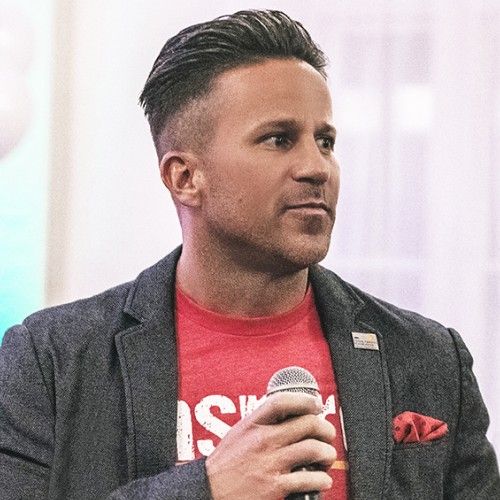In today's dynamic business landscape, effective communication isn't just a desirable trait; it's essential for any organization. For managers, this often boils down to the quality of their one-on-one meetings with direct reports. These sessions foster connection, drive alignment, and empower employees. They are the key to team health, providing a forum for nuanced discussions that simply can't happen in group settings. However, many managers find themselves juggling numerous responsibilities, from strategic planning and client management to daily operational hurdles, making it challenging to consistently deliver personalized and impactful feedback. This is where innovative tools like AIM Insights step in, offering a data-driven approach to enhance these crucial interactions and transform them from mere check-ins into catalysts for growth.
Applying AIM Insights
Consider a busy marketing manager, Emily, who oversaw a team of five. Before adopting AIM Insights, her weekly one-on-ones sometimes felt reactive and, frankly, a bit superficial. She would address immediate concerns and touch upon project updates, but often struggled to provide truly insightful and personalized feedback. The preparation for each meeting felt like another tedious task on an already overflowing to-do list. Emily, like many managers, understood the immense importance of connecting with her team, delving into their individual progress, and offering tailored guidance. Yet, the sheer volume of information she had to process—project deadlines, individual performance metrics, team dynamics, and overarching company goals—coupled with the pressure of her own daily tasks, often left her feeling like she was just scratching the surface in these meetings.
While she deeply cared about her team's growth and development, finding the dedicated time to synthesize everything and tailor her feedback to each person felt too complex for her busy schedule. There were weeks when she would leave a one-on-one feeling dissatisfied with the feedback she gave, knowing she hadn't truly connected or provided the depth of support her team members needed to thrive. This struggle is not unique; it's a common struggle in organizations where existing performance management systems might be inefficient, relying on outdated methods or lacking the actionable insights managers need. Without a streamlined, intelligent way to track and understand individual contributions, managers are left to piece together information from fragmented sources, often leading to generic feedback sessions rather than truly impactful ones that resonate with an employee's specific experiences.
Then, a pivotal moment arrived when her company introduced AIM Insights. Initially, Emily was skeptical; another new tool promising to solve all her problems? But as she began to integrate it into her routine, Emily soon discovered the transformative power of these insights. AIM Insights was designed to integrate with their existing communication channels and project management tools. It didn't require manual data entry; instead, it gathered data points related to individual and team activities, conversations, and progress. The key benefit, however, wasn't just the data collection itself, but how this vast amount of information was synthesized and presented – moving far beyond a complicated, dull, dashboard to offer truly dynamic and actionable feedback that was easy to understand.
Each week, Emily received an automated email recap from AIM Insights. This was not a dry list of completed tasks or generic KPIs. Instead, it offered concise, data-driven feedback based on each team member's current projects, their future goals, and their historical performance trends. This automated yet personalized summary was a game-changer. Emily was able to see this feedback for all of her employees at a glance, making it incredibly easier for her to prepare and deliver personalized feedback in her one-on-ones. This feature alone drastically improved her proper planning for each meeting, allowing her to walk into every one-on-one feeling confident, prepared, and genuinely informed about each team member's week. She could now dedicate her limited time in the meeting to deeper coaching and connection, rather than information gathering.
This monthly recap proved to be a significant improvement in her workflow. Suddenly, Emily had a concise, insightful, and actionable summary of each team member's month delivered directly to her inbox. Highlighting their achievements, flagging potential challenges she might not have been aware of, and giving an overall better insight into their work performance and engagement patterns. It was as if she had a dedicated assistant helping her prepare for each individual meeting. The days of frantically sifting through project management tools and email threads before a meeting were over.
The immediate impact on Emily's team was clear. Employees felt more seen and understood. The feedback they received was no longer generic or vague but felt directly relevant to their specific contributions, efforts, and challenges. This fostered a significantly greater sense of connection, trust, and transparency within the team. They recognized that Emily wasn't just "checking boxes"; she genuinely understood their work.
AIM Insights Impact
The profound impact of using a tool like AIM Insights on team engagement became abundantly evident. Employees often feel more understood and are consequently more willing to openly discuss challenges and roadblocks when they sense their manager has a clearer, data-backed grasp of their month. Feedback became noticeably more targeted, and individuals could readily see how it related directly to their day-to-day work and their broader professional development goals.
Furthermore, the data-driven nature of AIM Insights played a critical role in ensuring better team alignment. By providing managers with a holistic understanding of individual contributions within the broader context of team objectives, managers could provide feedback that strategically reinforced the larger vision and company goals. Consequently, employees gained a much clearer understanding of how their specific work, even seemingly small tasks, contributed directly to the company's overarching objectives. This fostered a stronger sense of shared purpose and collective responsibility. AIM Insights facilitated the connection between individual efforts and overarching team goals. Managers could effectively highlight how a specific contribution directly impacted key targets, therefore strengthening alignment and instilling a deeper sense of value in each team member's role.
Ultimately, AIM Insights can serve as a powerful catalyst for stronger relationships and more effective leadership. It transforms one-on-ones from routine, sometimes obligatory check-ins into truly valuable opportunities for genuine connection, deeply personalized feedback, and the cultivation of a workplace culture characterized by transparency, trust, and strategic alignment.
Managers who wisely utilize such tools often find they become significantly more effective leaders. It can free up their time, previously consumed by manual data compilation, to focus on higher-level strategic thinking and genuine mentorship. It provides invaluable insights that might otherwise be missed, and most importantly, it helps them build stronger, more meaningful relationships with their team members. The focus shifts from merely managing tasks to truly leading and supporting their people's growth and well-being.
AIM Insights, by equipping managers with personalized insights and actionable communication guidance, empowers them to move beyond superficial interactions and cultivate a more engaged, aligned, and ultimately more successful team. For managers seeking to elevate their one-on-ones and foster stronger, more productive relationships with their direct reports, AIM Insights offers a compelling and practical path forward in the complex landscape of modern leadership.




































































